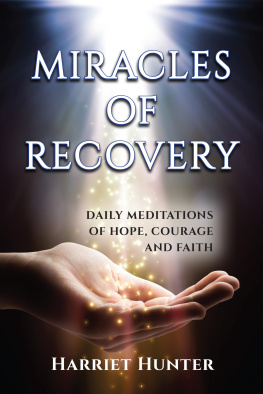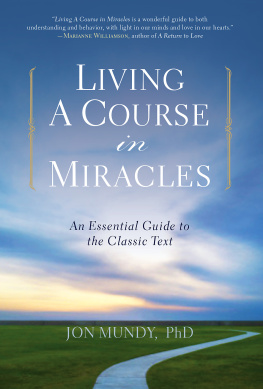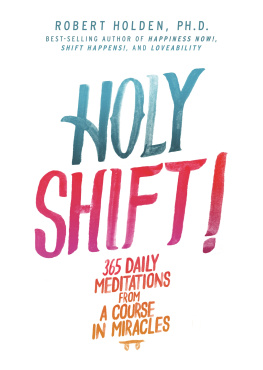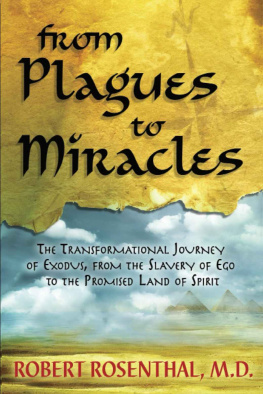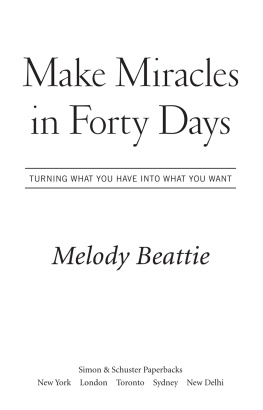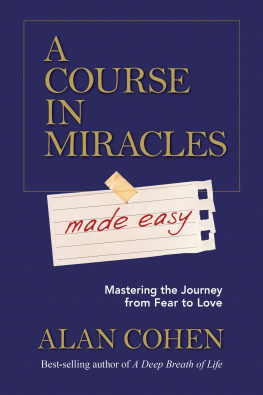
Journey
Without
Distance
The story behind
A COURSE IN MIRACLES
by Robert Skutch
CELESTIAL ARTS
Copyright 1984 Robert Skutch
Celestial Arts
P. O. Box 7327
Berkeley, CA 94707
No part of this book may be reproduced by any mechanical, photographic, or electronic process, or in the form of a photographic recording, nor may it be stored in a retrieval system, transmitted, or otherwise copied for public or private use without the written permission of the publisher.
First printing, May 1984
Manufactured in California in the United States of America
Cover and book design by Mary Russel, Sausalito, CA
Calligraphy by Patricia Cummins, Greenbrae, CA
Library of Congress Catalog Number: 84-070183
ISBN: 0-89087-404-2
The material from A Course in Miracles is used by permission of the copyright owner, Foundation For Inner Peace, Box 635, Tiburon, CA 94920. The Course, a three-volume hard cover set of books, can be ordered directly from the Foundation for $40. 00.
A COURSE IN MIRACLES
On behalf of all who have benefited by studying A Course in Miracles, this book is lovingly dedicated to Helen, Bill, Ken and Judy.
Foreword
A couple of years ago I casually remarked to a man who was interviewing me that I thought the set of books entitled A Course in Miracles comprise perhaps the most important writing in the English language since the translation of the Bible. I went on to explain my reasoning, that although the Course deals with the same discoverable psychological and spiritual truths as the New Testament, it presents them in a form that is harder to evadebecause it is more specific and less liable to various interpretations, and also because the psychospiritual exercises employed are so effective in helping us elude our normal defenses against self-discovery. I did not expect my impulsive statement to appear in print, but it did. In retrospect, I think that casual though it was, I would stand by it.
My own introduction to the Course came after a quarter of a century of search. Trained in physics and electrical engineering, and impressed with the power of science, I was dubious of most of the religious approaches I encountered which appeared to necessitate suspension of what seemed to me a healthy scientific skepticism. In 1954, at age 36, an up-ending experience in the form of an intensive two-week seminar had initiated a quest which by age 59 had brought me in contact with numerous pathsZen to Sufism to Vedanta to mystical Christianityand also with a series of experiences which were totally astonishing to me since my conceptual framework had no place for their likes. The experiences felt valid, and the spiritual philosophies had the ring of truth about them; still, there was a missing factor. Furthermore, I was vaguely aware that if the experiences were as veridical as I felt them to be, and the philosophies as true, they should be affecting my life more than they were.
At that point, I had moved from statistical communications theory and systems analysis to heading up a small group at Stanford Research Institute doing research on social change and future-oriented planning. After ten years of futures research I had published a small book entitled An Incomplete Guide to the Future, the existence of which was one of the better kept secrets in publishing history. It was clear to me by then that the United States, and indeed the industrialized world, had entered a transition period of historic significance, involving change at the most fundamental level namely, the basic tacitly agreed upon premises about the nature of life and reality upon which the whole structure of society ultimately rests. It seemed that, whereas half a century earlier the advance of positivistic science was making the religious/spiritual assumptions steadily less plausible, the picture was now otherwise. By 1977, and even more so in the years since, research into the mysteries of human consciousness, unconscious processes, intuition and creativity, etc., were progressively making the essential spirituality of existence more plausible. Impressed with the importance of this development, I agreed to serve on the Board of the Institute of Noetic Sciences, founded several years earlier by Apollo 14 astronaut Edgar Mitchell, who had reached similar conclusions to mine through dramatically different experiences. One of my fellow board members was Judith Skutch.
When we first met, we were waiting for a restaurant table, and I asked Judy the inevitable getting-acquainted question, What do you do? She enjoyed my astonished look as she replied, A Course in Miracles. For the next two hours I sat spellbound as she related the story told in this book. I couldnt wait to get my hands on the three books which make up A Course in Miracles.
I had much to learn about the ambivalence with which we humans approach getting acquainted with our deeper selves. The daily exercises in affirming a new belief system, which comprise the second volume of the Course, seemed simple and mildly intriguing; I had no understanding at the time of the subterranean effect they were having. The Text, the first volume, seemed abstruse, but I went at it with a will (I thought). Six months later I was shocked to realize that in spite of opening the Text daily, I could not recall ever finishing a single page. I would get sleepy; my mind would wander; I would remember tasks undone and would get up to do them. My mind was most ingenious at avoiding that which I thought I wantednamely, understanding the contents of the Text.
In time, the conscious intention won out over the unconscious resistance. My awareness that this was the case came in small steps. One day I would realize that a situation which once would have aroused fear or hostility no longer did soand yet I would have had no conscious awareness of the deep-seated changes taking place. I would find that my trust in a deep intuition, an all-knowing and all-forgiving part of myself, had strengthened noticeably, again without my direct conscious knowledge of the change taking place in the unconscious part of my mind. Stress and pain disappeared. My life was more active than at any previous period, and yet it happened more effortlessly than I would have been able to believe possible in earlier years. Aspects of my life fell into place in ways that were nothing short of mysterious. What impressed me most about the transformation I felt was the utter simplicity of the new way. A deeper part of myself, an Inner Teacher, guided action and removed obstacles, and the conscious mindthat rational, analytical ego-mind which once seemed my best precarious hold on some semblance of securitybecame naturally and comfortably the servant of the deeper mind. It will likely sound like a gross oversimplification, but my deeply felt conclusion came to be that all the problems we experience in our lives are illusory. There is only one problem, namely our resistance to seeing things as they truly are, or more accurately, seeing the wholeness as it is.
A Course in Miracles has by now influenced hundreds of thousands of lives. I feel privileged to have known Helen Schucman and Bill Thetford and the other players in the dramanot well, all of them, but well enough to have experienced a deep sense of mystery, not only about the efficacy of the Course itself, but also about the way in which it came and about its presumed source. I recall especially one day when I was discussing the Course with Helen, who still felt somewhat ambivalent about it, and seemed somehow not fully able to adapt its insight into her own life. Suddenly she seemed to transform into another personnot visually so much, as in terms of personality. For a minute or two, for a few sentences, this other Helen spoke of the real meaning of the Course with an authenticity


